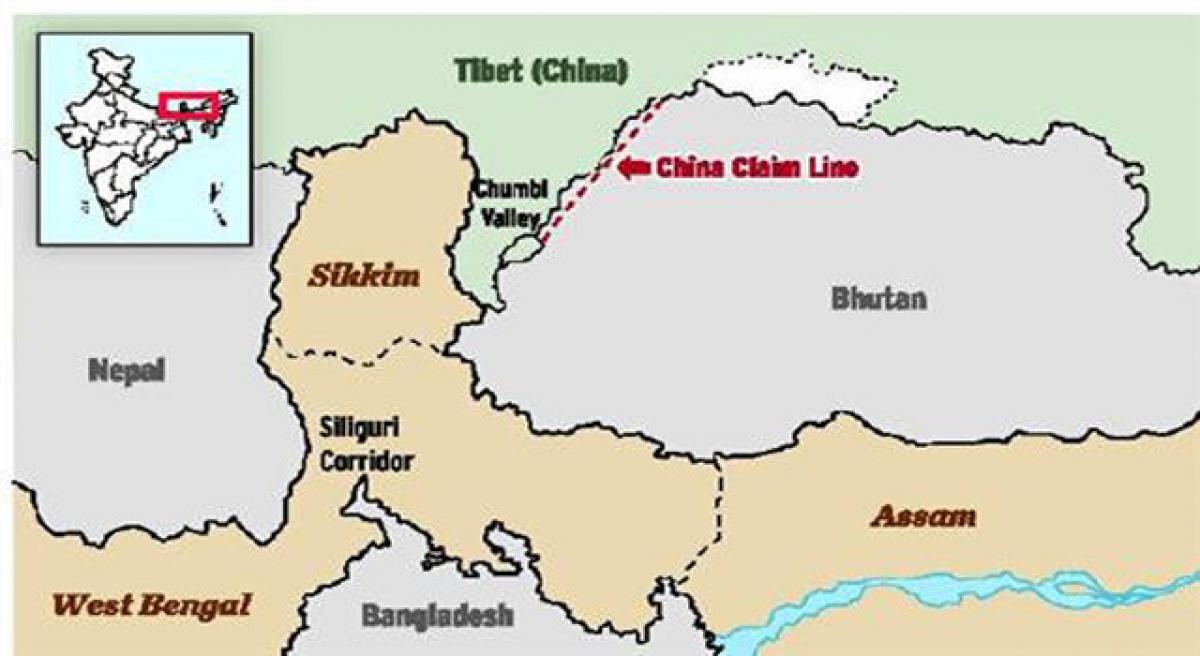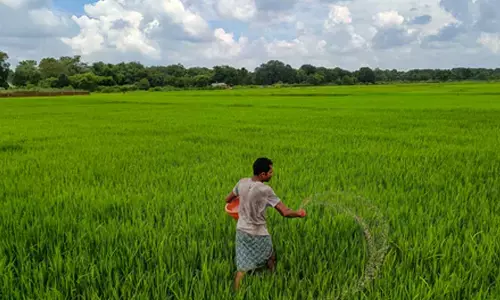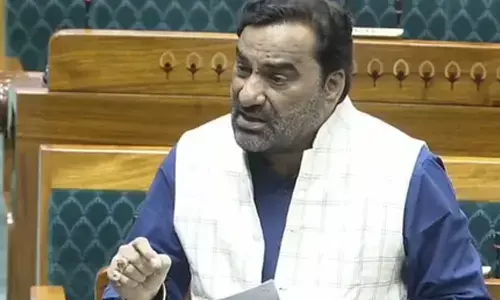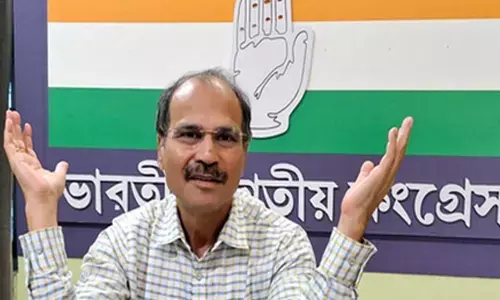India’s chicken neck

China on July 5, 2017 accused India of “misleading the public” by saying that Chinese troops are building a road close to the “Chicken’s Neck” in the Sikkim sector which could endanger India’s access to the northeastern States.
China on July 5, 2017 accused India of “misleading the public” by saying that Chinese troops are building a road close to the “Chicken’s Neck” in the Sikkim sector which could endanger India’s access to the northeastern States. (“Chicken’s Neck” refers to the Siliguri Corridor, a narrow strip of land, which has several vital installations around it and links the Northeast with the rest of India).
China claims Doklam plateau, an 89 sq km pasture that falls close to Chumbi valley at the corner of India-Bhutan-China tri-junction and is not very far from the Sikkim sector. India said that in coordination with the Royal Government of Bhutan, Indian personnel, who were present at general area Doka La, approached the Chinese construction party and urged them to desist from changing the status quo.
These efforts would continue, it said. In keeping with their tradition of maintaining close consultation on matters of mutual interest, Bhutan and India were in continuous contact through the unfolding of these developments, it said. India has expressed concern over the road building, apprehending that it may allow Chinese troops to cut India’s access to its northeastern States.
The Chumbi valley holds strategic significance for India, China as well as Bhutan. India sees it as a dagger pointed towards its so-called ‘chicken’s neck’ sector in the Northeast and rapid Chinese road construction in Tibet could make things difficult for India. At the same time, Sikkim is one of the few sectors where India has an advantage.“In the event of war, India’s Brigade-sized military presence inside Bhutan, stationed at Ha, allows it to attack the Chumbi valley from two sides, potentially cutting off Chinese troops stationed facing Sikkim,” according to Indian Express.
The Siliguri Corridor, or Chicken's Neck, is a narrow stretch of land, located in the Indian state of West Bengal, that connects India's northeastern states to the rest of India, with the countries of Nepal and Bangladesh lying on either side of the corridor. The kingdom of Bhutan lies on the northern side of the corridor. As a sensitive area amidst three countries, the strip is heavily patrolled by the Indian Army, the Assam Rifles, the Border Security Force and the West Bengal Police.
In recent times, the area has become the focus of illegal crossings by Bangladeshi rebels and Nepali Maoist insurgents, both in search of refuge from their country. A flourishing narcotics and weapons traffic also takes place in this region. All land transportation between mainland India and its far northeastern states uses this circuitous corridor, as there is no free-trade agreement between Bangladesh and India, according to Wikipedia.
Since the 1962 war with China, Indian strategists have envisioned a future scenario where "the Chinese may simply bypass and drop Special Forces to choke vulnerable Siliguri Corridor and cut off the Northeast. India’s fortunes in the Siliguri were slightly ameliorated when the tiny monarchy of Sikkim – situated just north of the Siliguri, between Nepal, China, and Bhutan merged with India in 1975 to become its second-smallest state, writes the Diplomat. China recognized India's annexation of Sikkim in 2003

















